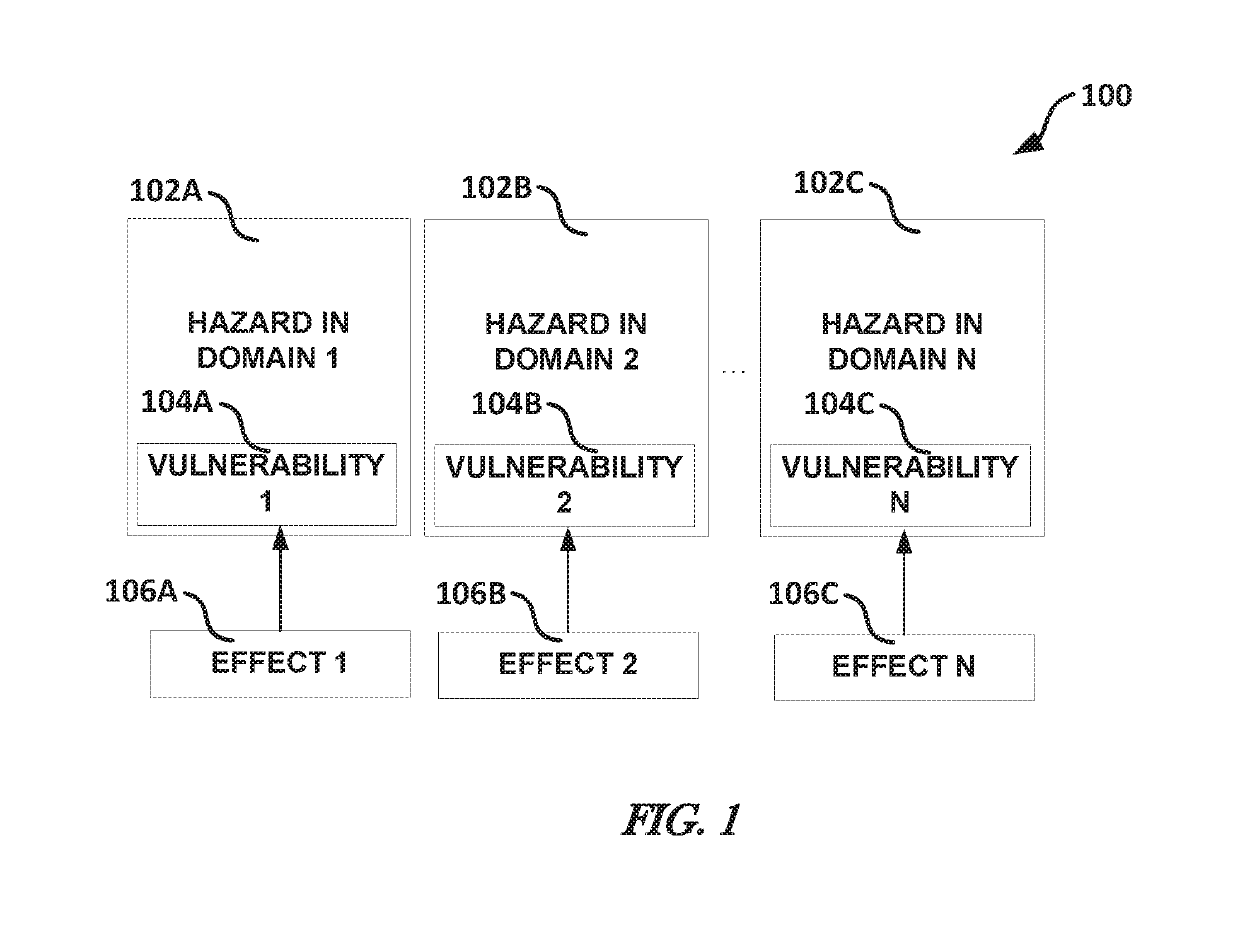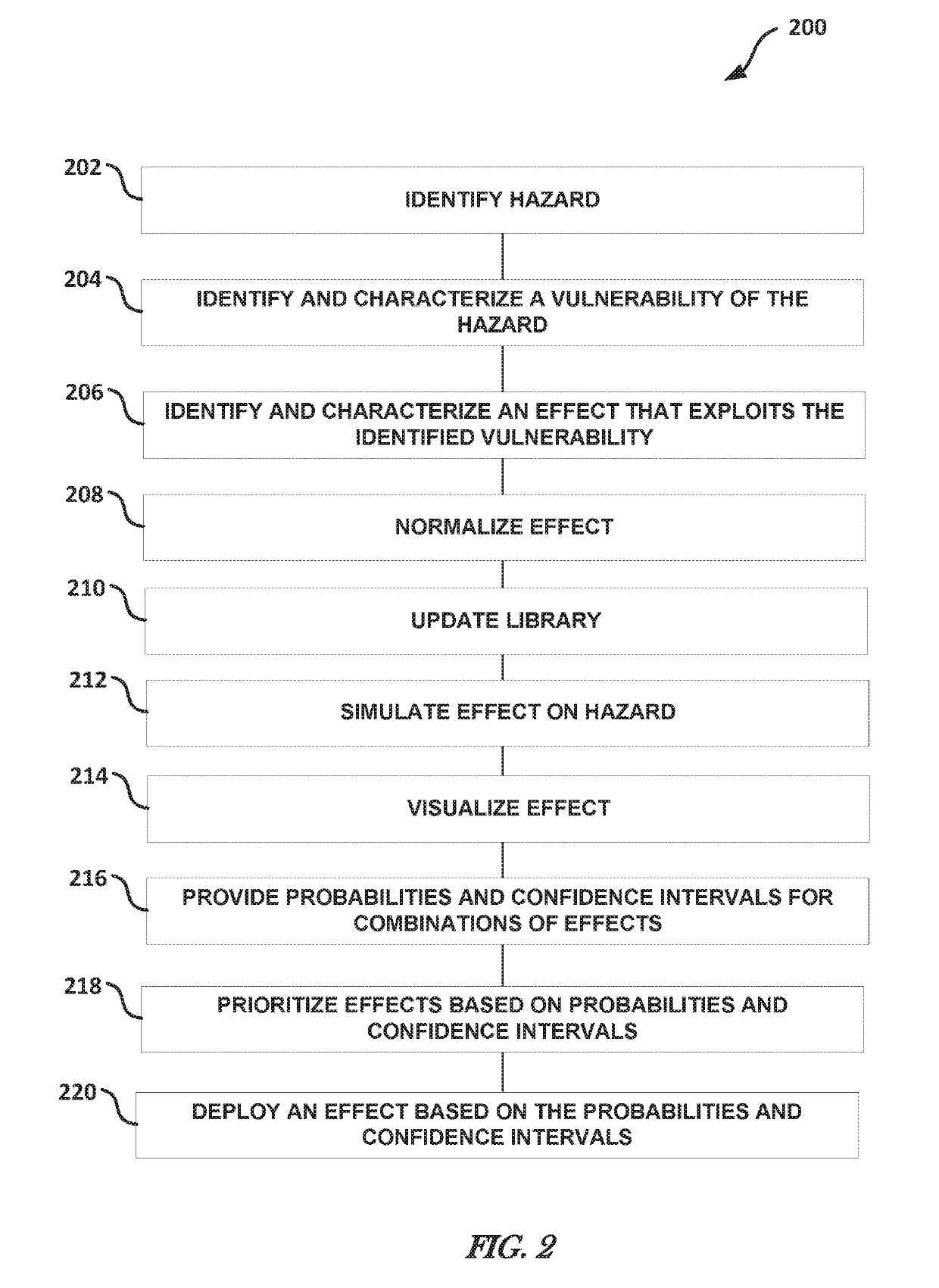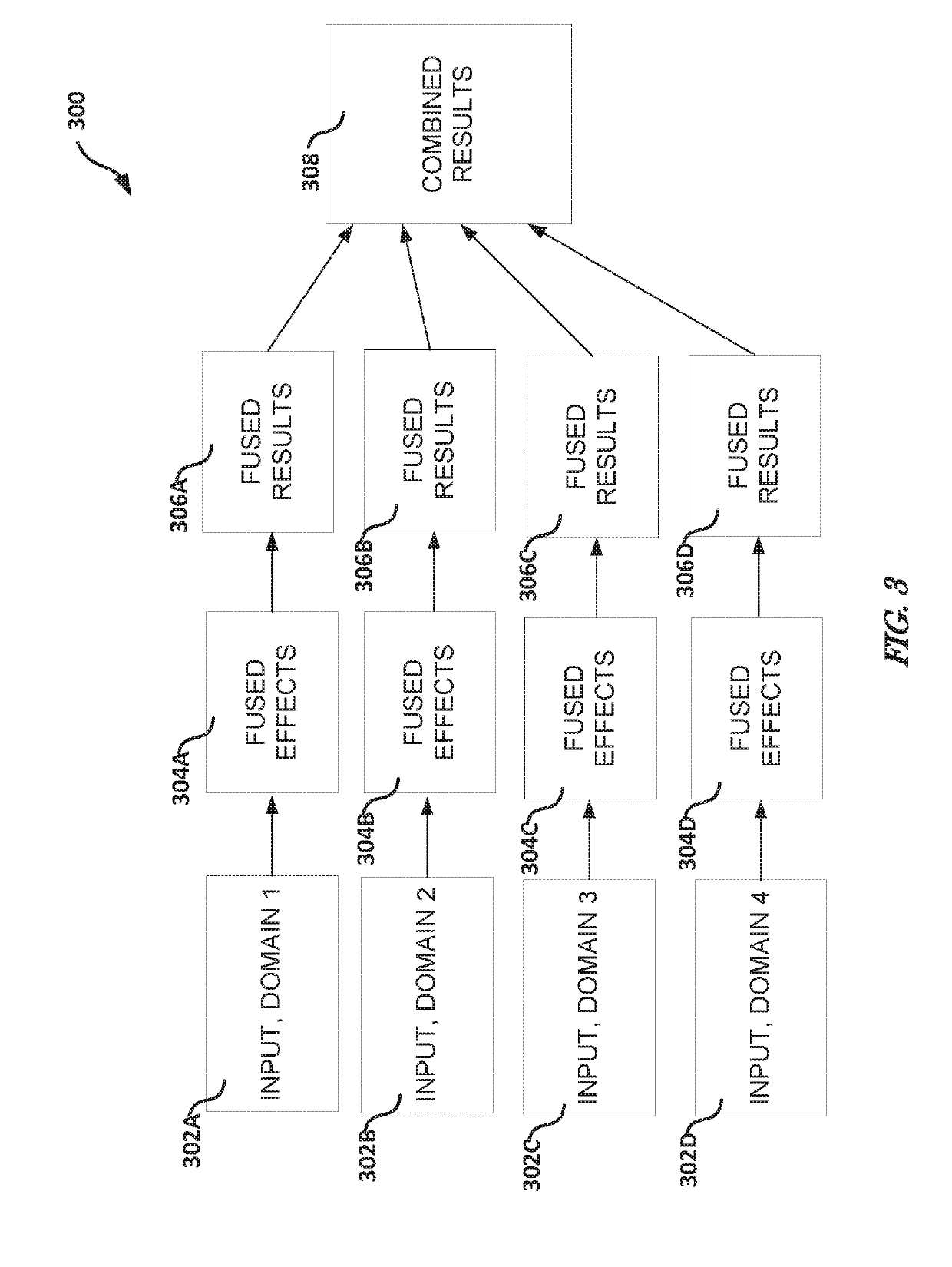Methods and apparatus for hazard abatement using normalized effect analysis
a normalized effect and analysis method technology, applied in the field of determining the response to a hazard, can solve the problems of inability to uniformly analyze the effects applied to hazards, difficulty in particular, and mechanisms lacking uniformity with respect to unique effect equations and their respective parameters
- Summary
- Abstract
- Description
- Claims
- Application Information
AI Technical Summary
Benefits of technology
Problems solved by technology
Method used
Image
Examples
example 2
Recovery—Hurricane Response
[0070]For operation 202, a radar or other weather system can be used to identify a hurricane. The operation 204 can include identifying an eye of the hurricane. The operation 206 can include identifying and characterizing a cloud seeding technique that exploits the calm weather experienced in the eye. A CONEMP can be based on a probabilistic weather model that considers the strength, expected damage, and whether infrastructure will remain available during the hurricane.
[0071]For operation 202, the hazard and affected system can have multiple phases. First, the infrastructure can be available, then the infrastructure can be reached by workers, the power can be on, goods can reach the infrastructure, the port can be open, ships can get in, loaded ships can get back out, or the like.
[0072]For operation 206, the co-locations of all these stages in the supply chain can be important for this effect. The characterization of the effect (e.g., the model) can includ...
example 3
l—Illness Recovery
[0074]For a generic system, the operations 202, 204, and 206 can include determining the actor (hazard), what is being acted on (the vulnerability), and how it will be affected (the effect). For example, in a hospital, the actor can be an unknown virus. The affected system can be the human body. The concept of employment can be based on a probabilistic treatment model to include the symptoms, the present and expected health condition of the patient, the available medicine(s) treat the virus, and the predicted recovery time of the patient.
[0075]The hazard can be carried out in multiple phases. First, that the patient's body can be exposed to the virus. Next, the patient can begin to exhibit symptoms, such as runny nose, sneezing, or stiffness. Then, the patient can develop a fever, indicating a definite infection. The patient can go to a doctor for diagnosis (identification of the hazard). Based on the diagnosis, the doctor can prescribe possible drugs (e.g., the ef...
PUM
 Login to View More
Login to View More Abstract
Description
Claims
Application Information
 Login to View More
Login to View More - R&D
- Intellectual Property
- Life Sciences
- Materials
- Tech Scout
- Unparalleled Data Quality
- Higher Quality Content
- 60% Fewer Hallucinations
Browse by: Latest US Patents, China's latest patents, Technical Efficacy Thesaurus, Application Domain, Technology Topic, Popular Technical Reports.
© 2025 PatSnap. All rights reserved.Legal|Privacy policy|Modern Slavery Act Transparency Statement|Sitemap|About US| Contact US: help@patsnap.com



